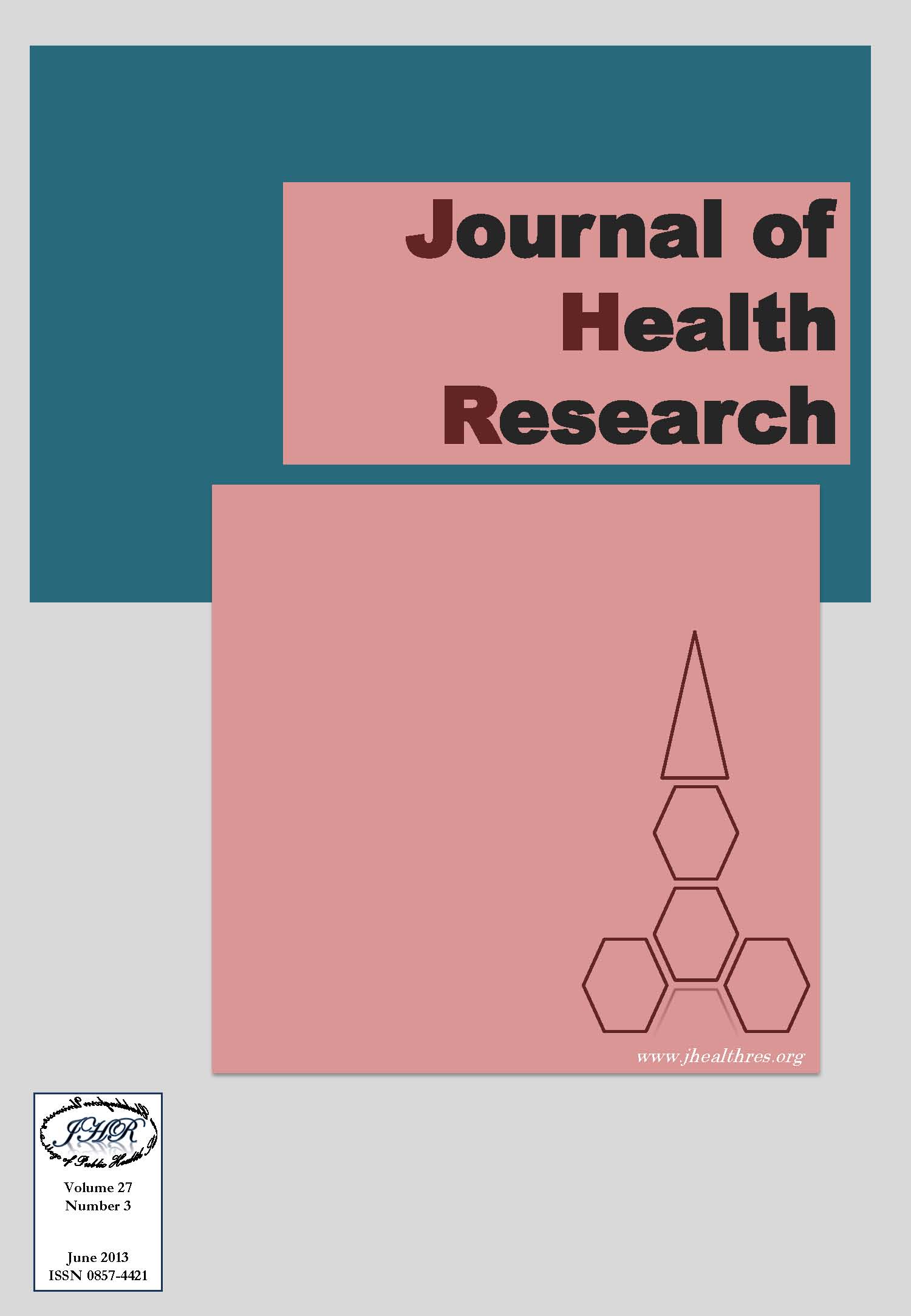Health Risk Assessments of Microenvironment Exposures and Urinary Biomarkers of Indoor-Office Workers: a Preliminary Study
Keywords:
Risk assessment, Microenvironment, Exposure, Biomarker, Indoor, Office workerAbstract
Volatile organic compounds (VOCs) are major source of pollutants in the ambient air, especially along the congested roadsides where the air qualities are generally below the standard. Whereas, for the indoor-office workers who spend most of their times inside, the indoor air pollution is an important environmental concern. In this study, the health risk assessments of benzene, toluene, ethylbenzene, xylene, formaldehyde and acetaldehyde ambient air were conducted at two office buildings in central Bangkok, Thailand during the summer of 2011. The average ambient air benzene, toluene, ethyl-benzene, m-, p-xylene, o-xylene, formaldehyde and acetaldehyde were 134.34, 239.28, 73.73, 48.46, 22.24, 21.16 and 7.42 μg/m3, while the average personal air benzene, toluene, ethylbenzene, m-, p-xylene, o-xylene, formaldehyde and acetaldehyde exposures were 165.70, 580.50, 84.45, 62.86, 24.52, 14.11 and 1.35 μg/m3 respectively. Most of each microenvironments of ambient and personal air exposures were not significantly differences except for the acetaldehyde (Independent t-test, p<0.05). Total concentration of personal air exposures was significantly higher than ambient air concentration (Independent t-test, p<0.05). All microenvironments of ambient air concentration in this study showed strongly and positively correlated to personal air exposures (Spearman’s rho correlation, r=1.000). Averages of life time cancer risk range of benzene, ethylbenzene, formaldehyde and acetaldehyde in official workers were 1.584E-04 - 2.05E-04, 8.26E-06 - 2.01E-05, 2.54E-05 – 7.08E-05 and 2.63E-06 – 3.08E-06, respectively. Of which cancer risk calculation of benzene, ethylbenzene and formaldehyde were higher than acceptable limit of 1.00E-06. But hazard quotients (HQs) of all microenvironments were varied from 0.001 to 0.003 which less than one. Each of microenvironments and total concentration of exposures (TVOCs) had positive relationship to urinary formic acid (Linear regression analysis, p<0.05). We concluded that the indoor office workers have higher cancer risk of microenvironments in ambient air exposures and urinary formic acid should be an appropriate biomarker for these exposures.







